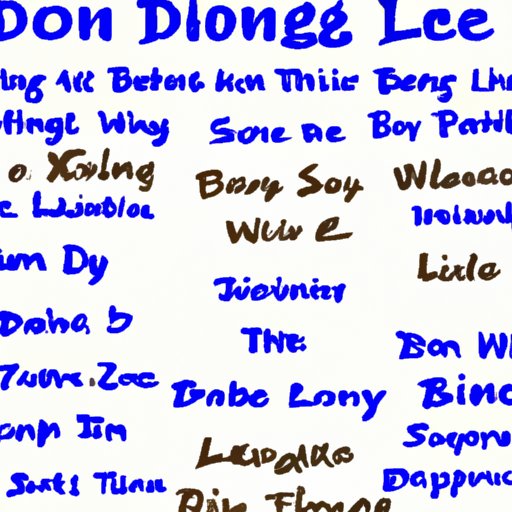Introduction
Swing dancing is an energetic and vibrant style of partner dancing that originated in the United States in the 1920s. It is characterized by fast-paced movements, playful acrobatics, and improvisation. It is still a popular form of social dancing today, with people of all ages participating in swing dance classes, competitions, and performances.
Definition of Swing Dance
Swing dance is a broad term used to describe a variety of partnered dances that evolved from the jazz music of the 1920s and 1930s. It includes several different types of dances such as the Lindy Hop, Jitterbug, Balboa, and Charleston. These dances are typically danced to upbeat jazz or swing music, although some incorporate other styles of music as well.

Overview of the Popularity and History of Swing Dance
Swing dancing first became popular in the 1920s and 1930s, when jazz music was at its peak. Since then, it has seen a resurgence in popularity over the years, especially in the 1940s and 1950s when swing music was once again popular. Today, swing dance is still popular around the world and is often seen in movies, on television shows, and at events such as weddings and dances.

The Basics of Swing Dancing
Swing dancing involves two partners facing each other and moving in sync to the beat of the music. The steps and movements vary depending on the type of swing dance being performed, but typically involve a combination of quick and slow movements, hops, turns, and spins. Many of the steps and movements can be improvised, allowing dancers to express their own individual style.
The types of music used for swing dancing vary greatly, but generally include upbeat jazz, blues, and swing music. Costumes are also often worn for performance or competition, ranging from traditional period costumes to modern, more casual attire.
Exploring Different Types of Swing Dance
There are several different types of swing dance, each with its own unique style and steps. The most popular types of swing dance include the Lindy Hop, Jitterbug, Balboa, and Charleston.
Lindy Hop
The Lindy Hop is an eight-count swing dance that originated in Harlem, New York in the 1920s. It is characterized by its smooth, circular movements and acrobatic lifts. It is usually danced to faster-tempo swing music.
Jitterbug
The Jitterbug is a six-count swing dance that originated in the Midwest in the 1930s. It is known for its quick, lively movements, and is usually danced to faster-tempo swing music.
Balboa
The Balboa is a four-count swing dance that originated in Southern California in the 1920s. It is characterized by its close embrace, quick footwork, and intricate moves. It is usually danced to mid-tempo swing music.
Charleston
The Charleston is a four-count swing dance that originated in South Carolina in the 1920s. It is characterized by its high-energy movements, kicks, and flicks. It is usually danced to faster-tempo swing music.
Benefits of Learning to Swing Dance
Learning to swing dance can provide numerous physical and mental health benefits. Studies have shown that swing dancing can improve balance, coordination, flexibility, and cardiovascular health. Additionally, it can help reduce stress, increase self-confidence, and provide an enjoyable form of physical activity.
In addition to the physical benefits, learning to swing dance can also provide social benefits. It can help build relationships, create a sense of community, and provide a great way to meet new people. For those who are already in a relationship, it can be a fun and exciting way to spend time together.

Getting Started with Swing Dancing
If you’re interested in learning to swing dance, there are a few different ways to get started. Taking a class is a great way to learn the basics as well as advanced techniques. Most cities and towns offer classes, either through a local dance studio or a community center. If you’re unable to take a class, there are plenty of online resources available to help you learn the basics.
Once you’ve learned the basics, it’s important to practice regularly to become more proficient. You can practice with a partner or on your own, and there are plenty of videos and tutorials available online to help you perfect your technique. There are also many performance opportunities available for those who wish to show off their skills, such as competitions, showcases, and festivals.
Conclusion
Swing dancing is a timeless form of partner dancing that has been popular for decades. It is an energetic and vibrant style of dance that requires skill, coordination, and creativity. Learning to swing dance can provide numerous physical and mental health benefits, as well as social benefits. With classes, practice, and performance opportunities available, it’s never been easier to get started with swing dancing.
(Note: Is this article not meeting your expectations? Do you have knowledge or insights to share? Unlock new opportunities and expand your reach by joining our authors team. Click Registration to join us and share your expertise with our readers.)
